RISING STORM - THE IMPERIAL JAPANESE NAVY AND
CHINA
1931-1941
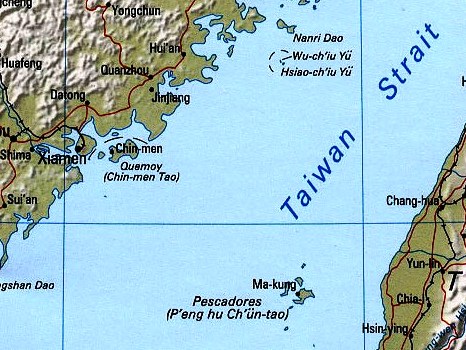 Location of Amoy (Xiamen) situated on an inlet of the Formosa (Taiwan)
Strait.
Location of Amoy (Xiamen) situated on an inlet of the Formosa (Taiwan)
Strait.
Japanese Amphibious Assault and Occupation of Amoy (Xiamen) - 1938 -1939
© 2012 Bob Hackett, Sander Kingsepp and Anthony Tully
Revision 2
Hsia-Men, later Amoy (now Xiamen) consists of two islands, Amoy City and Kulangsu (now Gulangyu). Amoy has been a busy seaport since the Song Dynasty (960-1279), and probably before. In 1279, the Mongols defeat the Songs. Later, Amoy becomes an outpost and refuge for Ming loyalists fighting the Manchu Qing Dynasty. In the 16th century, Portuguese missionaries arrive, but are soon turned away. Later, British and Dutch traders arrive until the port is closed to trade in the 18th century. In 1842, after the First Opium War between Britain and China, Amoy is established as one of the Treaty Ports open to foreign trade. At that time, most of the tea exported from China is shipped out of Amoy.
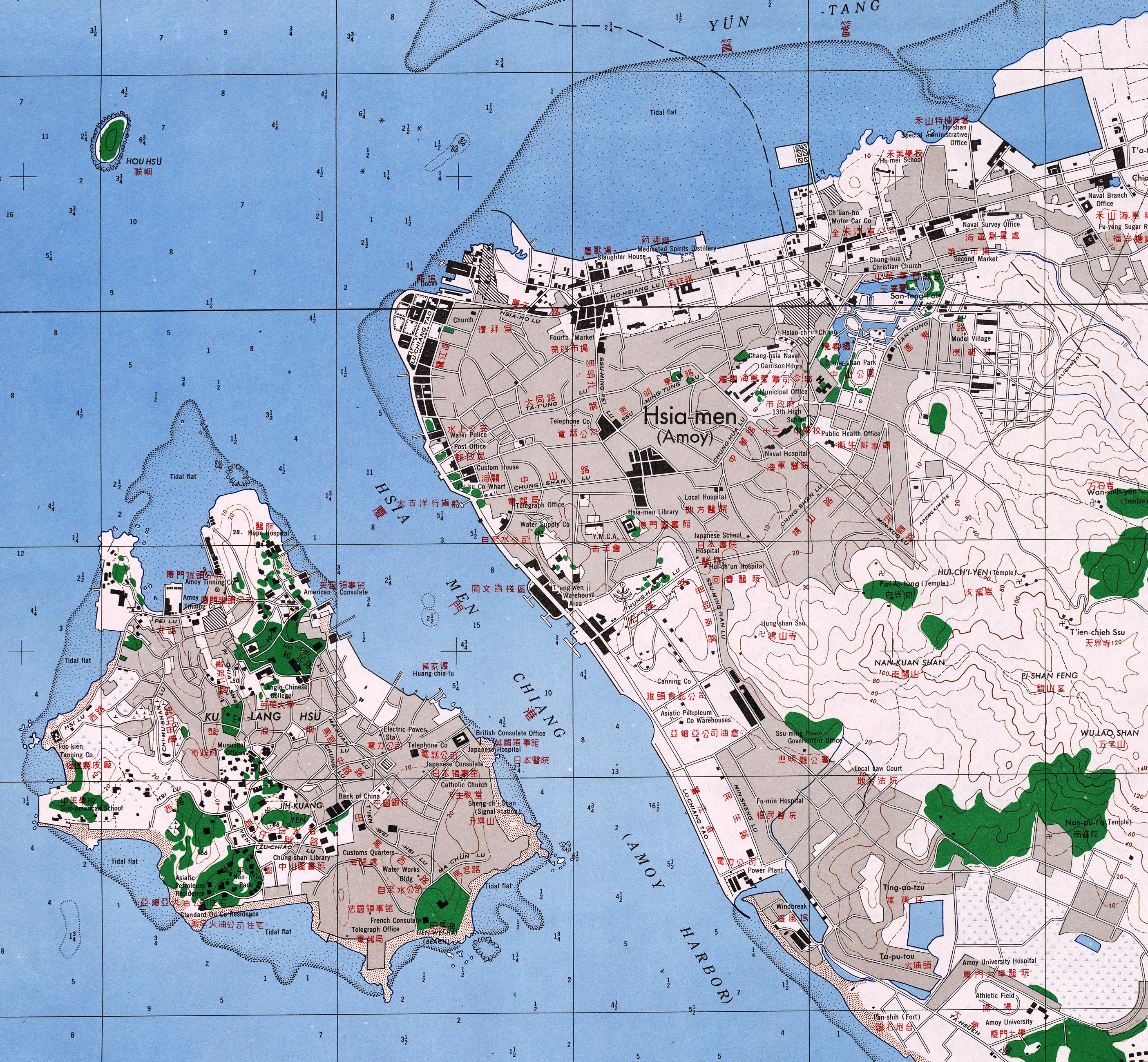 (Old map of Kulangyu (Gulangyu) Island and Amoy)
(Old map of Kulangyu (Gulangyu) Island and Amoy)
Thirteen countries including Great Britain, France, Spain, Germany, Holland, Denmark, Japan and the United States establish consulates, churches, and hospitals on nearby Kulangyu Island only reached by ferry. In 1903, Kulangyu is officially designated an "International Settlement"
and has its own international police force. [1]
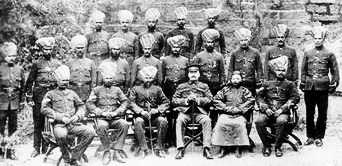 (Kulangyu Police Force, early 1900s)
(Kulangyu Police Force, early 1900s)
1932:
Political unrest in China calls for constant vigilance by the United States Asiatic Fleet (USAF) to protect American lives and property.
USAF destroyers and gunboats USS TULSA (PG-21) and SACRAMENTO (PG-19) are assigned to Amoy and the south China seaports of Fuchow and Swatow. During April, May and June '32, political unrest and the menace from communist attacks in the Amoy area becomes alarming and the need to protect the International Settlement of Kulangsu apparent. TULSA, SACRAMENTO and submarine tender USS CANOPUS (AS-9) and other vessels are ordered to Amoy to protect Americans or evacuate them if necessary. SACRAMENTO remains at Amoy until the end of the year.
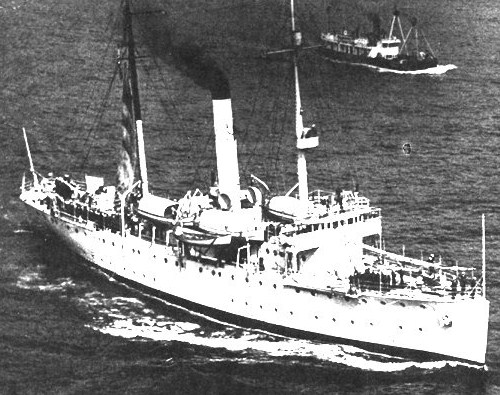 USS SACRAMENTO
7 July 1937: The Marco Polo Bridge Incident ("First China Incident"):
USS SACRAMENTO
7 July 1937: The Marco Polo Bridge Incident ("First China Incident"):
Hun River, Lukuokiao, China. Imperial Japanese Army (IJA) troops on night maneuvers at the Marco Polo Bridge fire blank cartridges. Chinese troops across the river think they are under attack. They fire live rounds back, but do not cause injuries. At morning roll call, the Japanese discover a soldier missing and assume the Chinese have captured him. The Japanese demand entry to the Peiping (Beijing) suburb of Wanping to look for the soldier, but the Chinese refuse. The Japanese then shell the city. An undeclared war on China begins.
August 1937:
Japanese residents in South China are under the protection of Rear Admiral (later Vice Admiral) Okuma Masakichi's (37)(former CO of YAMASHIRO) DesRon 5. After the clash in Shanghai, residents in South China begin evacuating on 15 August by order of the Foreign Minister. The evacuation of Japanese residents from Amoy, delayed for various reasons, is completed in the latter part of August. All reach Formosa safely.
May 1938: Operation "D"- The Assault on Amoy:
Vice Admiral (later Admiral) Shiozawa Koichiís (32)(former CO of FURUTAKA) 5th Fleet (South China Naval Force) assaults Amoy. Koichiís forces consist of CruDiv 9's MYOKO (F) and light cruiser TAMA, CruDiv 10's light cruisers TATSUTA and TENRYU, DesRon 5's light cruiser NAGARA, DesDiv 3ís NADAKAZE, SHIMAKAZE, SHIOKAZE and DesDiv 16ís FUYO, ASAGAO and KARUKAYA, DesDiv 29ís HAYATE and OITE, DesDiv 30ís YAYOI and KISARAGI, collier MUROTO, 1st Gunboat Div and auxiliaries SYURI, CHOJU, DELHI, EIKO, IKUTA, KAZAN, KURI and HAYA MARUs and DAIICHI MARU No. 8, NANSHIN MARU No. 8, NANSHIN MARU No. 31, TAIKO, and YODATI, auxiliary minelayers ENOSHIMA and ENTO (MAROSHIMA) and supply ship MUROTO. Prior to the landing, heavy cruiser MYOKO (F) fires on Chinese positions using the new Type 91 AP shells. [2]
CarDiv 1's KAGA and seaplane tenders KAMOI and KAMIKAWA MARU provide air cover.
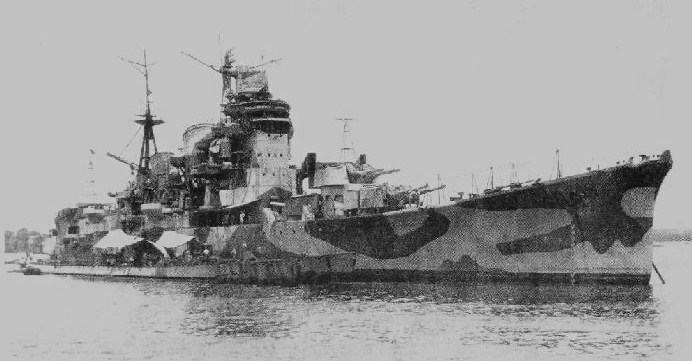 Heavy cruiser MYOKO
Heavy cruiser MYOKO
At dawn, the 5th Fleetís warships bombard Ho-tsu, Ni-chin and Wu-tung and cover an amphibious assault landing by more than 2,000 troops of the No. 2 Yokosuka, No. 2 Kure and No. 7 Sasebo Special Naval Landing Forces (SNLF) at Wu-tung, Huang-tso and Ta-tao. The Japanese break through the Chinese positions. As the Chinese fall back, Japanese troops head for Amoy. At the same time, NE of Amoy, over 30 aircraft from KAMOI and KAMIKAWA MARU bomb coastal postiions, bridges, roads, ferries and ships. The poorly equipped Nationalist Chinese 75th Division defenders suffer heavy casualties and are overrun by the SNLFs.
11 May 1938:
At about 0800, the Japanese land near Fort Pai Shih under gunfire support of three destroyers and two gunboats. The ships are out of range of the fort's guns, so the Chinese abandon their positions. The Japanese then attack the neighboring forts at Hu Li Shan and Pan Shi and rout their defenders.
12 May 1938:
During the night, Chinese forces abandon Amoy and move to Sung-yu. A mass exodus from the island follows. In the next 24 hours as many as 60,000 people flee to the International Settlement on Kulangyu. Thereafter, the IJNís Jinmen Garrision and 1st Garrison Unit occupy Amoy.
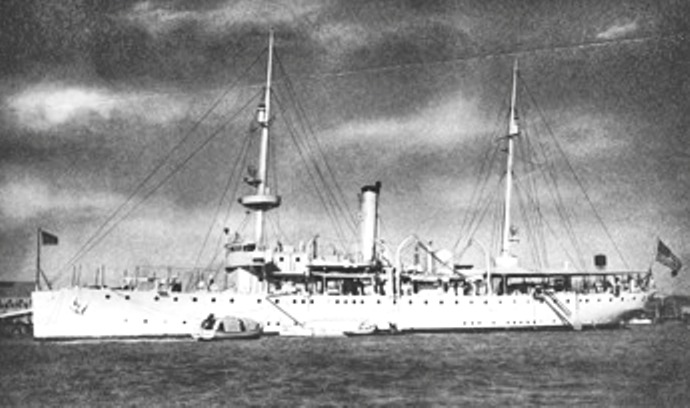 USS ASHEVILLE
17 October 1938:
USS ASHEVILLE
17 October 1938:
Following the end of fall maneuvers, Bat Div 1ís ISE, HYUGA and MUTSU and Bat Div 3ís KONGO and KIRISHIMA depart Terajima Strait, near Sasebo, NW Kyushu for southern China accompanied by cruisers CHOKAI, MAYA, NACHI, KUUMANO, MIKUMA and SUZUYA and light cruiser ABUKUMA to resume their patrol off southern Chinese coast.
October 1938:
London: A powerful Japanese force is reported (incorrectly) anchored at Amoy. Battleships FUSO, KONGO, KIRISHIMA, HYUGA, ISE, MUTSU and NAGATO, cruisers CHOKAI, MYOKO, NACHI, SUZUYA, KATORI, NATORI, TATSUTA and TENRYU, minelayers KANOME and TSUBAME and destroyers NAKAKAZE SHIMAKAZE, and SHIOKAZE are all reported in the South China area.
Hong Kong: British light cruiser HMS BIRMINGHAM, conducting exercises, is ordered to proceed to Amoy where Captain Brind, RN, is to obtain as many good, clear photographs as possible of the Japanese ships. The crew are told that Admiralty Intelligence is very interested in VHF radio, then in its infancy, so they are to take careful note of any odd-looking aerials. Many Japanese warships had never been seen before, much less photographed, so some sort of record of their armaments and silhouettes would prove invaluable, even if no peculiar aerials are visible.
21 October 1938:
BIRMINGHAM creeps along the coast and approaches the harbor unseen. Every member of the crew who owns a camera is on deck. So too is anyone with artistic ability, ready with pencil and sketchbook. Their activities are coordinated by officers so that each ship will be faithfully recorded. At 0800, BIRMINGHAM comes around and proceeds up the harbor. There are four lines of Japanese warships, all with their armament fire controls and aerials uncovered. BIRMINGHAM passes between the first two columns, her crew sketching and snapping pictures, then turns and passes between the other two lines, although by now the Japanese crew are rushing about trying to cover all their secret equipment with tarpulins.
It all seems quite a big fuss over a trivial matter. But at the time, BIRMINGHAMís crew have not heard about anything called radar. British Intelligence is pleased that the Japanese seem equally ignorant. Reports and photographs from other sources apparently confirm this impression.
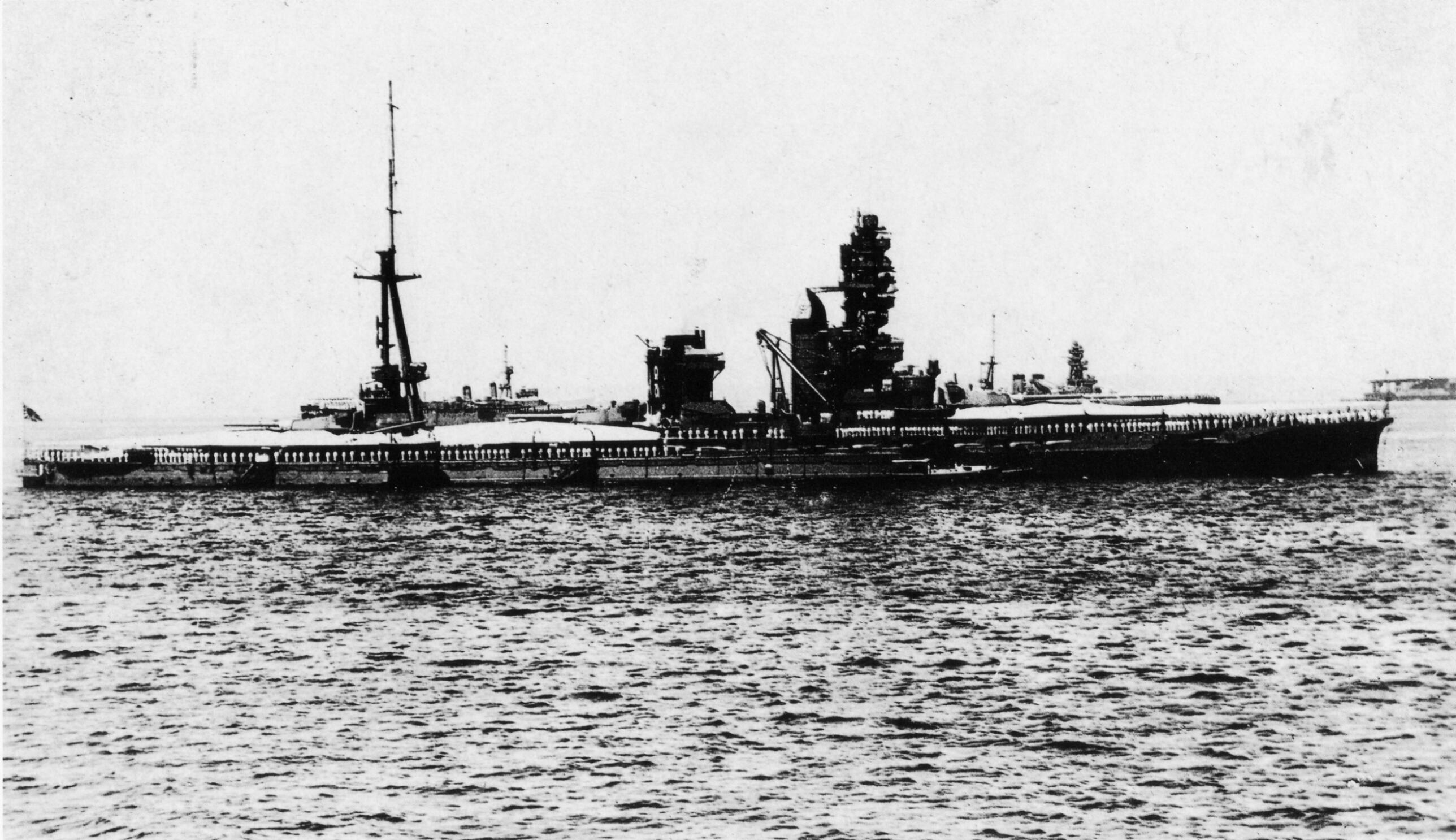
 ISE and KIRISHIMA in 1938
By 1100, BIRMINGHAM is returning to Hong Kong, her crew feeling that they had won a small victory over the Japanese. There are even more proud when the photographs are received by the Admiralty who send a signal expressing appreciation.
KIRISHIMA launches a Type 95 Nakajima E8N1 Dave floatplane which takes several photos of retiring BIRMINGHAM.
11 May 1939:
ISE and KIRISHIMA in 1938
By 1100, BIRMINGHAM is returning to Hong Kong, her crew feeling that they had won a small victory over the Japanese. There are even more proud when the photographs are received by the Admiralty who send a signal expressing appreciation.
KIRISHIMA launches a Type 95 Nakajima E8N1 Dave floatplane which takes several photos of retiring BIRMINGHAM.
11 May 1939:
Amoy. A Chinese shoots a Japanese citizen. The Japanese respond by landing a Special Naval Landing Force (SNLF) detachment near the International Settlement on Kulangyu. At 1500, gunboat USS ASHEVILLE (PG-21), off shore since 9 May, departs.
13 May 1939:
USS BULMER (DD-222) arrives off Kulangsu with some troops and joins USS EDSALL (DD-219) already present.
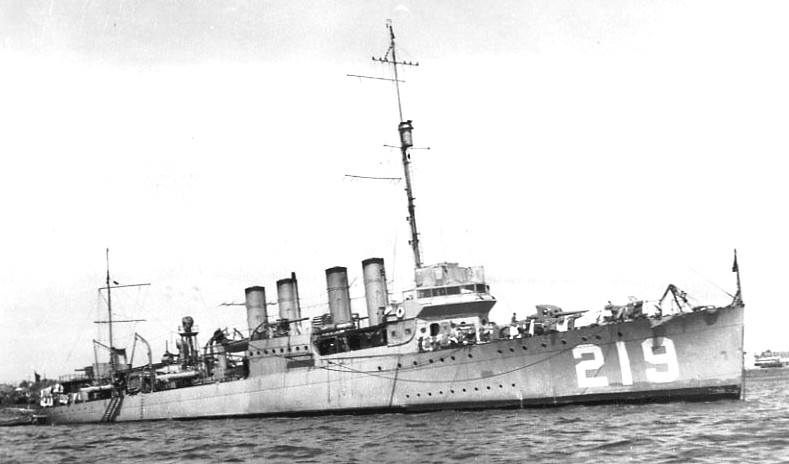
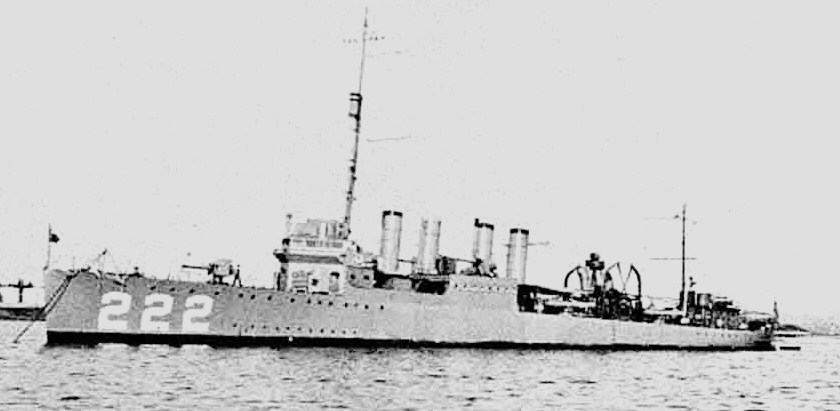 USS EDSALL and USS BULMER
16 May 1939:
USS EDSALL and USS BULMER
16 May 1939:
USS MARBLEHEAD (CL-12) arrives off Kulangsu and lands a contingent of U.S. Marines to protect American nationals. Britainís China Station's 5th Cruiser Squadron's light cruiser HMS BIRMINGHAM also lands sailors and marines to protect their residents.
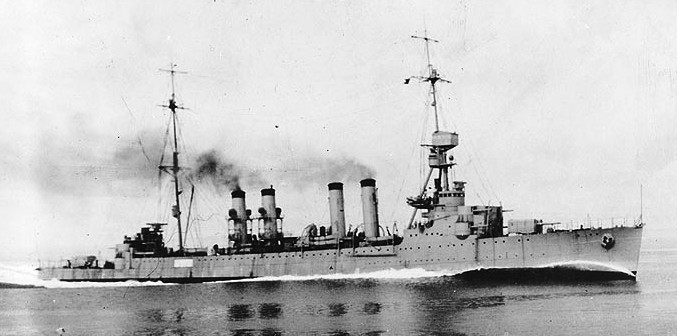
 USS MARBLEHEAD and HMS BIRMINGHAM.
17 May 1939:
USS MARBLEHEAD and HMS BIRMINGHAM.
17 May 1939:
at various times during the month, cruisers HMS CORNWALL, HMS DORCHESTER, HMS DUNCAN, destroyers HMS STRONGHOLD, HMS DIANA, HMS DEFENDER and HMS SCOUT and French light cruisers EMILE BERTIN and LAMOTTE-PICQUET all take up station off Kulangsu. The French also put ashore naval forces in the International Settlement as the Americans and British had done.
22 May 1939:
Heavy cruiser MYOKO, flagship of Vice Admiral Shiozawa, CinC, 5th Fleet, arrives in Amoy. Shiozawa claims the IJN only landed SNLF troops to protect Japanese nationals in the city and there is no need for the landing of foreign forces.
A series of talks are held between Vice Admiral (later Admiral) Sir Percy L. H. Noble, CinC, British China Station and Japanese officials on board HMS BIRMINGHAM.
26 May 1939:
HMS BIRMINGHAM departs with Vice Admiral Noble embarked.
May 1939:
USS MARBLEHEAD departs. Her Marines are replaced by a contingent from USS TULSA (PG-22).
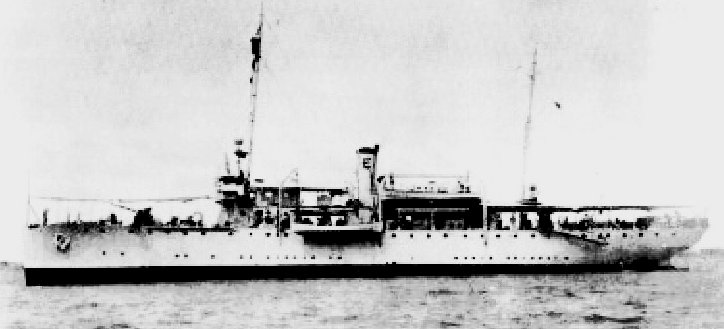 USS TULSA
June 1939:
USS TULSA
June 1939:
Negotiations continue.
July 1939:
Negotiations resume between Cdr John T. G. Stapler, CO, South China Patrol, United States Asiatic Fleet and Rear Admiral (later Vice Admiral) Miyata Giichi (36)(former CO of ATAGO), CO of the IJN's 3rd Auxiliary Base Unit at Amoy. MIYATA claims he can do nothing about the Japanese blockade as it is the responsibility of Vice Admiral (later Admiral) Kondo Nobutake, CinC, South China Fleet.
3 September 1939: World War II begins in Europe:
USS WHIPPLE (DD-217), flagship of the South China Patrol, with now Captain Stapler embarked is at Amoy. Her landing force is ashore. At 2355, WHIPPLE's deck log notes that France has declared war on Germany, two days after German troops invaded Poland.
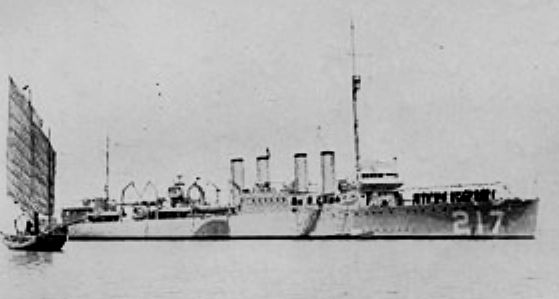 USS WHIPPLE
ca. September 1939:
USS WHIPPLE
ca. September 1939:
The Japanese land 150 men at Amoy. The Americans, French, and British each land 42-man parties. Soon after the outbreak of the European war, British and French units are withdrawn.
18 October 1939:
An agreement is reached between the International Settlement's Municipal Council and the Japanese Consul General for the suppression of anti-Japanese activities in the Settlement, but other Japanese demands are not granted. American and Japanese naval forces then withdraw from the Island.
January 1940:
Another similar ďincidentĒ occurs between the Chinese and Japanese.
22 March 1940:
Gunboat USS ASHEVILLE returns to Kulangsu.
Authors' Note:
[1] Kulangyu was also known as Kolongsoo.
[2] The notion that Type 91s were not tested before the outbreak of war is incorrect.
-Bob Hackett, Sander Kingsepp and Anthony Tully
Back to Rising
Storm Page


















